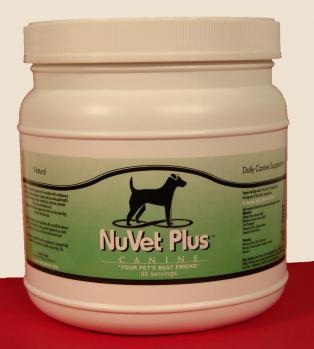QuestionOK, my cat-Charlie, is pregnant and Im not sure how long until she will have her kittens, if you feel her stomach, you can feel the kittens... we put her into our screened in room so that she doesnt have them outside, because we have 7 barn cats. Today i took her outside to wander around, and she went to the bathroom, buthad diarehha, what does that mean? Is it bad? And is there any way that I can find out how long she is along? I heard that taking their temperature can help decide how far along, and how long until they give birth... can you please help me out?
Thank you, Tina
PS- I have been giving her vitamins as well, they are for sick, pregnant, or nursing cats, i givve her two, (thats what it said to give)...thats ok right?
AnswerHello Tina -
Congratulations!
Pregnancy is normally about 60-63 days long and three to five kittens is the average litter size.
There is a possibility that your cat may have overeaten which is the cause for the diarrhea. Keep an eye on it though, if it continues contact your vet as she may be ill or ahe may be preparing to give birth. Without knowing how far along she is, it may be tough but it sounds as though she may be close to birthing if you can feel movement of the kittens.
The vitamins are fine and will help her body through the pregnancy and will also help with fetal development.
At least two weeks before the pregnant cat is due to have the kittens, a nesting box should be set up so she can become accustomed to it. A laundry basket with clean towels often works very well. If you wait too long, she may have the kittens in the closet, on your bed, or in the basement. Do not allow her outside as her due date arrives, or she may have the kittens outside. Do not allow people or other pets to disturb her while she is in the delivery area.
During delivery, newspapers may be used to line the box with new ones added as they become wet. Once she is finished, the entire box is cleaned and lined with clean papers and a blanket. Do not use strong smelling cleaners in the delivery area, as the mother and offspring identify each other by smell. Do not allow the queen to have the kittens in the litter box, as that increases the likelihood of disease. Privacy, cleanliness, dryness, and warmth are needed for an ideal queening location.
A second box to place kittens into during sibling births may be necessary. This protects the new kittens, if the queen is moving a lot. A heating pad should be placed on the bottom with a fleece pad over it. The kittens should NEVER be placed directly on heating pads as they may be burned. Another 1-2 towels should be placed over the top of the basket to keep the heat in. The fleece and the air in the basket should feel comfortably warm to your hand. If the kittens are moving around and crying, they are too cold or too hot. If they are bobbing their heads, searching, and crying, they are hungry. They should be put with mom as soon as possible to nurse. The kittens can be placed with the queen between births to allow them to nurse and bond, and if necessary, be put back in the basket while the next sibling arrives.
A stack of soft, clean towels should be handy to help clean off kittens, if necessary. White or light colored towels will show the color of any discharge or placenta. Have a laundry basket handy to throw the towels in as they are used. Wash as soon after birth as possible with detergent and bleach to minimize staining of the towels. Paper towels work well to dry the kittens and reduce the need for doing laundry afterward.
The hair on the queen's belly and around the tail may need to be shaved if it is long or thick to make it easier for the kittens to find the nipples and to keep her clean.
Average gestation is about 60-63 days. It can be about 1 week either side of that date and still be normal. Several changes that may be noticeable in the queen the last week before delivery include a distended, 'dropped' abdomen, enlarged and softened vulva, enlarged nipples, and full mammary glands. Loss of appetite and nervousness alternating with sleep also indicate the time is near.
Labor and delivery have three stages. In the first stage, the cervix is being dilated and softened. She may moan, meow, or pant during labor. She may make frequent trips to the litter box which should be moved close, and she may show nesting behavior such as rearranging the towels in the nesting box. She may lick her mammary and perineal area more vigorously. Abdominal contractions are not evident in this stage. She may be restless, secretive, and try to hide. This is why the box is in a quiet area in the house. The lights can be dimmed if she is more comfortable. Stage 1 may take 12-24 hours and ends when the first kitten passes into the pelvic canal.
Stage two starts when she begins actively pushing to deliver the first kitten. The first kitten tends to take the longest to deliver, as this kitten passing through the cervix fully dilates the cervix. She may deliver standing, laying, or squatting. The abdominal muscles assist in the delivery. She should deliver within 15-30 minutes of the start of contractions for each kitten. Normally, 3-5 strong contractions are necessary to deliver each kitten.
Stage three is the delivery of the placenta. Each kitten has a placenta and it is usually delivered with the kitten. Keep track of the placentas on the notepad, as she may have two kittens and then two placentas. The queen will usually eat the placenta. After two or three, the owner can remove some of them to prevent her from eating them all. The placenta does offer nourishment to the queen, but too many may cause diarrhea or vomiting.
She will repeat the second and third stages of labor until all the kittens are born. Some queens will have all the kittens within an hour and others will take several hours for each kitten. Expect about 2-6 hours to deliver all the kittens. If she is resting comfortably and caring for the kittens that have already arrived, just watch her. If she is continuing to contract and does not deliver another kitten within half an hour, contact your veterinarian right away.
She may like a drink of fresh water or small amount of food during labor and delivery.
Allow the kittens to nurse between deliveries, if the queen will allow. This will stimulate release of the hormone oxytocin which will help in the delivery of the next kitten as well as the "let down" of milk. The kittens are only able to absorb the colostrum through their intestines for the first 24 hours of life. After that time, they are no longer able to get any immunity from the dam. The queen should be licking their perineal area and abdomen to stimulate urination and defecation. She will continue this for 2-3 weeks.
I hope this information has helped you and your pet.
If you would like information on natural and herbal remedies for human and animal concerns please contact me at wintersaurora@yahoo.com and I will be happy to assist you. I also offer a catalog of specially formulated herbal products which I can send to you as well. My products are also available online at www.localharvest.org.
Best wishes to you and your pet. Please keep me posted and contact me anytime if you have further questions.
Sincerely,
Sharon Hubbs, AHG
Certified Natural Health Consultant & Herbalist

 pitbull skin ; pitbulls Nuvet vitamins; pitbulls vitamins;
Questioni have a 7 month old pitbull. he has a skin con
pitbull skin ; pitbulls Nuvet vitamins; pitbulls vitamins;
Questioni have a 7 month old pitbull. he has a skin con
 peek-a-poo allergies ;
QuestionMy 6 year old Peek-A-Poo is eating Purina 1 hea
peek-a-poo allergies ;
QuestionMy 6 year old Peek-A-Poo is eating Purina 1 hea
 Pythium in Great Pyr
QuestionQUESTION: I have a dog with Pythium it is a Gre
Pythium in Great Pyr
QuestionQUESTION: I have a dog with Pythium it is a Gre
 Boxer: Itching ear infections; Nuvet for ear infections ; grain free foods ;
QuestionI have a boxer that recently turned 2 in June.
Boxer: Itching ear infections; Nuvet for ear infections ; grain free foods ;
QuestionI have a boxer that recently turned 2 in June.
 my English bull dog Kobe is his name
Questionhis 9 months old eats Eukanuba and I dont know
my English bull dog Kobe is his name
Questionhis 9 months old eats Eukanuba and I dont know